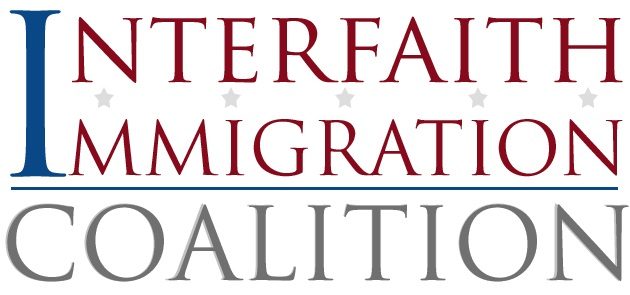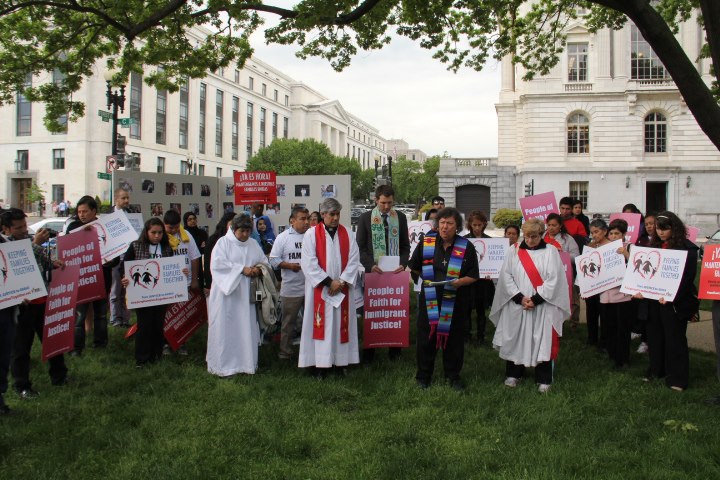Hosting interfaith prayer vigils—including virtual ones in this time of social distancing concerns—provides the opportunity for faith leaders to express how welcoming immigrants is part of all faith traditions, reflecting on the deep scriptural and spiritual roots of our work to support immigrants. Even small events, multiplied across the country, will send a powerful message to the Trump administration, Congress, and the Supreme Court that welcoming immigrants is important to people of faith and conscience.
Steps to a Successful Virtual Prayer Vigil
- Coordinate a virtual prayer vigil with faith leaders, immigrants’ rights groups, refugee resettlement agencies, immigrant leaders, community members, and if possible local elected leaders. Use Zoom or other available platforms to gather.
- Collect the social media identities of your key partners; including Twitter handles, Facebook sites, Instagram–or wherever are the primary ways that your partners virtually communicate and can influence primary targets/audiences.
- Identify the core leaders and speakers, make sure there are impacted people, including undocumented individuals and faith and interfaith organizations who are invited to help plan and speak at your gathering.
- Consider inviting elected officials including Representatives, Senators, City Council Members, or the Mayor to join your virtual discussion.
- Be clear about your goals, what you want to accomplish, and how many people you hope will join the event.
- If you can meet with a small group in person, identify the best location for the vigil, which is generally somewhere central in a symbolic memorial, state capitol, park or city hall. If you are meeting only virtually, share images of key locations where decision makers work, or of locations symbolically important for dreamers.
- If you are meeting virtually, practice with your technology ahead of time, meet ahead with presenters online, and be sure all participants have the needed links for connecting. If you are having an allowable event with social distancing, apply for any permits needed for the location; reserve or order any equipment you’ll need such as microphones, cameras, banners, candles, projectors; and make sure you can access electrical outlets.
- Choose a time of day best for attendance and media — most news reports take place at 5-6 PM and 9-10 PM, so a few hours before those time blocks is best for press events.
- Promote the event through social media, public service announcements, flyers, websites, and congregation bulletins. Use creative imaging to catch attention!
- Agree on messaging and talking points.
- Encourage those who are dialing in to make signs that are consistent with your messaging and agreed upon ahead of time–and invite them to even “hold and show them” during your event to generate interest. Develop signage to share on your screen as you talk.
- Assign specific talking points to each speaker and ensure they have time limits.
- Invite the media by issuing a media advisory and following up with a press release after the event.
- Invite participants at the virtual vigil to be part of further action and advocacy by taking actions such as writing and calling the White House and their Representatives and Senators, posting their commitment for DACA/TPS recipients, inviting DACA/TPS recipients to testify in their virtual services, and more.
The set-up for the vigil should ensure that all faiths are respected and welcomed with awareness and consciousness. If you are holding an interfaith virtual event, drawing on multiple faith traditions and rituals can make vigils much more powerful, raising the creative and dramatic tension.
Ask clergy attending (even virtually) to wear collars, stoles, robes and any other appropriate religious attire.
As social distancing allows, you may consider:
- Procession with candles to symbolic location. If your action is virtual, use images or a video to ask persons to “virtually process.”
- A Prayer Wall with handwritten prayers for immigrants. If you are virtual, ask for prayers to be shared via chat.
- Lift up stories in sacred texts.
- Highlight passages in scripture and send electronically to Members of Congress.
- Collect and deliver prayers electronically to your Senators and Representatives.
- Make visuals – photos, drawings, art, etc.that show the consequences of the loss of DACA/TPS protections.
Sample Vigil Program
- Welcome: A few words about the focus and purpose of your vigil. Why now? What’s the concern? Who’s affected? How can this vigil convince your members of Congress to support DACA/TPS? What values shape your faith traditions’ response to these concerns? This may take the form of brief comments from one of your speakers, or a welcome and an opening prayer.
- Music: Invite local musicians who share similar values to join your vigil, you can have them do one or two songs throughout the program. Choose songs that are connected to the cause, or songs that everyone knows and can sing along.
- Opening Prayer: Ask clergy or key lay leader to open with a prayer song—A singer, choir or instrumentalist can perform, or a few singers can lead participants in singing.
- Speaker: A personal story from a local community member of how the outdated and unjust immigration system has impacted families. More than one story can be integrated throughout the program as well. Creative Ritual: Integrate creative symbols or rituals from faith traditions that draw more attention to the importance of immigration reform (see above suggestions).
- Prayer: One person may lead the prayers, or you might invite several faith leaders to pray according to their traditions. Involve vigil participants in praying a refrain throughout your prayer time, or pray in a circle so everyone has the opportunity to pray. Consider offering prayers in multiple languages.
- Song & Closing: reiterate the focus and purpose of your vigil, and send participants off with a call to welcome newcomers and raise their voices in the public sphere to stop the deportations. Consider a procession or march to another symbolic and strategic location.

